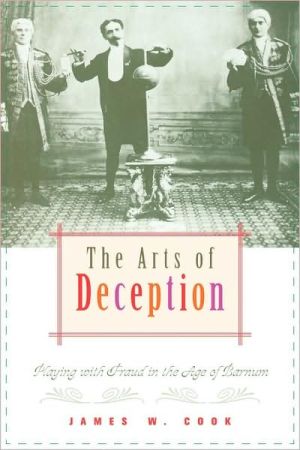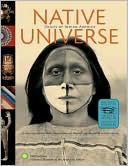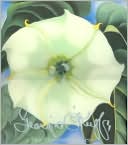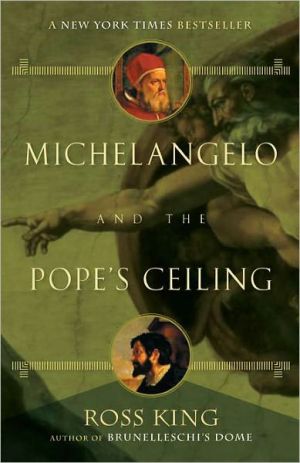Arts Of Deception
Ingenious automatons which appeared to think on their own. Dubious mermaids and wild men who resisted classification. Elegant sleight-of-hand artists who routinely exposed the secrets of their trade. These were some of the playful forms of fraud which astonished, titillated, and even outraged nineteenth-century America's new middle class, producing some of the most remarkable urban spectacles of the century.\ In The Arts of Deception, James W. Cook explores this distinctly modern mode of...
Search in google:
Ingenious automatons which appeared to think on their own. Dubious mermaids and wild men who resisted classification. Elegant sleight-of-hand artists who routinely exposed the secrets of their trade. These were some of the playful forms of fraud which astonished, titillated, and even outraged nineteenth-century America's new middle class, producing some of the most remarkable urban spectacles of the century.In The Arts of Deception, James W. Cook explores this distinctly modern mode of trickery designed to puzzle the eye and challenge the brain. Championed by the "Prince of Humbug," P. T. Barnum, these cultural puzzles confused the line between reality and illusion. Upsetting the normally strict boundaries of value, race, class, and truth, the spectacles offer a revealing look at the tastes, concerns, and prejudices of America's very first mass audiences. We are brought into the exhibition halls, theaters, galleries, and museums where imposture flourished, and into the minds of the curiosity-seekers who eagerly debated the wonders before their eyes. Cook creates an original portrait of a culture in which ambiguous objects, images, and acts on display helped define a new value system for the expanding middle class, as it confronted a complex and confusing world.Charles L. Ponce de Leon - Journal of Social HistoryJames W. Cook's book on 'artful deceptions' in nineteenth-century American popular culture is not merely fascinating, fluently written, and engaging to read. It sheds light on a number of different subjects and helps us to appreciate the thoroughly interconnected nature of cultural phenomena in what he calls, quite appropriately, the 'age of Barnum.' Indeed, it is a stellar example of cultural history, providing the reader with both a vivid picture of the specific social milieu that encouraged this new mode of exhibition and an understanding of the more amorphous intellectual climate that influenced exhibitors and audiences alike. Making shrewd use of the available evidence, Cook has written a book filled with compelling stories and anecdotal details. Yet what stands out in the end is the rigor and incisiveness of his analysis--the provocative conclusions he derives from his vignettes and the remarkable way that he is able to make us see their larger significance...The Arts of Deception is an important work in the new historiography of popular culture.
Introduction: Thinking with Tricks11The Death and Rebirth of the Automaton Chess-Player302The Feejee Mermaid and the Market Revolution733Describing the Nondescript1194Modern Magic1635Queer Art Illusions214Epilogue: Barnum's Ghosts256Notes269Index309
\ American StudiesAlthough readers may very well wonder whether there is anything more to be said about P. T. Barnum and 'humbuggery' in nineteenth-century America, this superb book provides a resounding affirmation. The research is impressive, the presentation is engaging and flows smoothly...[A] compelling book.\ — Michael Kammen\ \ \ \ \ \ ChoiceCook explores the 19th-century Americans' fascination with fraud and deception as entertainment, and suggests that the popularity of what P. T. Barnum referred to as "humbugs" is intimately related to the birth of popular and mass culture in the 19th century and to other important features of a 19th-century, middle-class, market-driven society. Cook considers a wide and eclectic range of specific "curiosities"...This is a fun, intelligent, sophisticated, imaginative book.\ — K. Blaser\ \ \ \ Journal of Social HistoryJames W. Cook's book on 'artful deceptions' in nineteenth-century American popular culture is not merely fascinating, fluently written, and engaging to read. It sheds light on a number of different subjects and helps us to appreciate the thoroughly interconnected nature of cultural phenomena in what he calls, quite appropriately, the 'age of Barnum.' Indeed, it is a stellar example of cultural history, providing the reader with both a vivid picture of the specific social milieu that encouraged this new mode of exhibition and an understanding of the more amorphous intellectual climate that influenced exhibitors and audiences alike. Making shrewd use of the available evidence, Cook has written a book filled with compelling stories and anecdotal details. Yet what stands out in the end is the rigor and incisiveness of his analysis—the provocative conclusions he derives from his vignettes and the remarkable way that he is able to make us see their larger significance...The Arts of Deception is an important work in the new historiography of popular culture.\ — Charles L. Ponce de Leon\ \ \ \ \ \ New Republic[Cook] is an imaginative cultural historian who excels at teasing complex significance from apparently straightforward artifacts, practices, and events...[He] provides fresh insight into the impact of commerce on consciousness. The Arts of Deception is a subtle and illuminating work of cultural history.\ — Jackson Lears\ \ \ \ \ \ Library JournalCook has written a fascinating analysis of mass entertainment in 19th-century America, with the all-time master of marketing ploys as one of the main players. P.T. Barnum, the "Prince of Humbug," is the most prominent figure in a series of slippery presentations that captured the imagination (and the paid attendance) of unsuspecting audiences. Beginning with the Joice Heath story in 1835, Barnum used a combination of exaggeration, trickery, clever rumor-spreading, and manipulation of the press to exhibit Heath as the 161-year-old former slave of George Washington's father and therefore "the first person who put clothes on the unconscious infant," George. When after Heath's death it became clear that she was hardly 80 years old, Barnum even managed to profit from the embarrassment by charging a 50-cent entrance fee to Heath's public autopsy. This story is a model for the several other melodramatic mass-entertainment hoaxes described in the book. Despite the seeming lightness of the topic, this is essentially a scholarly book. Cook analyzes the social milieu and the audiences, as well as the phenomenon of entertainment fraud itself, which he sees as "one of the most pervasive currents" in 19th-century popular culture. Recommended for public and academic libraries. Bonnie Collier, Yale Law Lib. Copyright 2001 Cahners Business Information.\ \








